 Notably absent from this spring’s BookExpo America, on which I reported in an earlier post, were the names we associate today with familiar, long-running lines of photography books: powerHouse pH, Aperture, Nazraeli Press, Steidl, Hatje Cantz, Scalo, Kehrer Verlag. Only the 800-pound gorillas Taschen and Chronicle Books used this showcase for their visual books, and of course they’re not specialized in photography, though they publish many relevant titles.
Notably absent from this spring’s BookExpo America, on which I reported in an earlier post, were the names we associate today with familiar, long-running lines of photography books: powerHouse pH, Aperture, Nazraeli Press, Steidl, Hatje Cantz, Scalo, Kehrer Verlag. Only the 800-pound gorillas Taschen and Chronicle Books used this showcase for their visual books, and of course they’re not specialized in photography, though they publish many relevant titles.
Price of course explains it, at least in part: Booth rental at BEA costs upward of $10K, plus associated costs, and a niche photo-book publisher won’t likely recoup that from a BEA show, directly or indirectly, in today’s market. Indeed, photo-book publishers won’t likely make their money back, much less a profit, on any book that doesn’t bear a blue-chip name: Jock Sturges, Sally Mann, Diane Arbus, Joel-Peter Witkin, Sebastião Salgado.
This explains why so many niche publishers have come to require that photographers subsidize their own books. Today, unless a book project carries with it dependable sales of 1000 copies or more, operations like powerHouse Books, aperture, and Nazraeli Press won’t consider it without the photographer kicking in between $30-50K. Which makes them glorified vanity presses.
![]()
Sad fact is, in today’s glutted market for photo books, publishers can no longer guarantee volume sales or substantial reviewer attention to their products. Most of them, inept at marketing their wares even in the industry’s heyday, have long since turned sales and promotion over to the authors. In effect, they’ve made themselves little more than book packagers with warehouses and distribution networks. Such houses make no enduring commitments to authors, and the promise of secure existence in the “long tail” of a publishing house’s backlist has ceased to hold. It’s a rare publisher nowadays whose attention to a given author or book goes beyond the perfunctory and lasts more than a season.
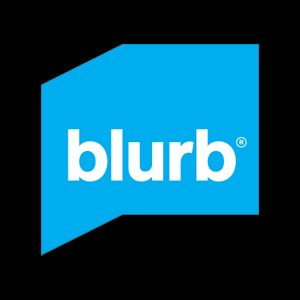 What a publishing house offers, then ― and it’s about all it offers nowadays ― is whatever prestige attaches to its name and reputation. Without trivializing that factor, since most such imprints have made it clear that their names are for sale, and they’re no longer prepared to put their money where their mouths are by investing heavily in a book, such an imprint doesn’t mean what it used to. Why fork over $50K to powerHouse when, for a tenth of that, you can produce your own book, comparable in quality, through a POD provider like Blurb, generating your own PR (or hiring a publicist) and attracting the purchasers yourself ― as most publishers expect you to do anyway?
What a publishing house offers, then ― and it’s about all it offers nowadays ― is whatever prestige attaches to its name and reputation. Without trivializing that factor, since most such imprints have made it clear that their names are for sale, and they’re no longer prepared to put their money where their mouths are by investing heavily in a book, such an imprint doesn’t mean what it used to. Why fork over $50K to powerHouse when, for a tenth of that, you can produce your own book, comparable in quality, through a POD provider like Blurb, generating your own PR (or hiring a publicist) and attracting the purchasers yourself ― as most publishers expect you to do anyway?
•
Digital technology makes it possible, for the first time in history, to produce, store, retrieve, and transmit images without producing physical objects. That shift has already transformed our cultural relationship to photographs, thus reconfiguring entire industries.
Digital technology enables us to do the same with sequences of images, image-text works, and other complex artifacts of visual communication. What we still call books, newspapers, magazines, and exhibitions no longer need to take physical form; that becomes merely an option. And if, for some reason, a physical version is desired, it can now get generated on a one-off basis.
 As our understanding of it sinks in, this development will reconfigure our relationship to the concept of publisher, and radically revise our assumptions about the form and function of the book, including the illustrated book and the photography book. Already photographers have begun to self-publish through Blurb, Xlibris, and other print-on-demand (POD) providers. Given the increasingly high quality of the output of these systems, the steadily falling unit costs, the distribution options that these vendors offer, the elimination of the editorial pipeline, and the option of multipurposing a printed book as an ebook (or of making ebook its primary or even its only form), photographers have an unprecedented range of options for controlling the form(s) in which they embody their work and enable the transmission of their work to its audiences. If they can design their books and sell them directly to readers and lookers, with only a small set-up cost, what exactly could a publisher offer as an inducement to share any resulting profits?
As our understanding of it sinks in, this development will reconfigure our relationship to the concept of publisher, and radically revise our assumptions about the form and function of the book, including the illustrated book and the photography book. Already photographers have begun to self-publish through Blurb, Xlibris, and other print-on-demand (POD) providers. Given the increasingly high quality of the output of these systems, the steadily falling unit costs, the distribution options that these vendors offer, the elimination of the editorial pipeline, and the option of multipurposing a printed book as an ebook (or of making ebook its primary or even its only form), photographers have an unprecedented range of options for controlling the form(s) in which they embody their work and enable the transmission of their work to its audiences. If they can design their books and sell them directly to readers and lookers, with only a small set-up cost, what exactly could a publisher offer as an inducement to share any resulting profits?
The market can’t possibly sustain the sheer number of high-end printed photo books published annually. Reality check: How many photo books did you purchase last year, what did you spend on the in total, and how much of that money did you spend on books that weren’t either remaindered or secondhand? If the continued production of printed books of photographs depends on a customer base made up of people like you, how do you rate its chances of survival?
•
I grew up with books on paper and music on vinyl. Each had a tactile, physical aspect that became part of my kinesthetic memory. I still recall (albeit dimly) what it felt like in the late 1950s to slip an LP record from its cardboard jacket, slide it onto the Rek-o-Kut turntable, lift the tonearm with its Shure M3D cartridge, set the diamond-tipped stylus into the first groove, and listen to the resulting sound as it made its way through the heated, glowing tubes of my Pilot stereo amp and preamp into and out of my AR2 speakers.
Despite that relatively sophisticated sound system, much of what I listened to through it had its limitations, from an audiophile’s standpoint. As a teenage jazz and blues fan, I bought LPs of lots of monaural recordings transferred from early 78s, wax cylinders, even piano rolls ― James P. Johnson, Blind Lemon Jefferson, Bessie Smith, Louis Armstrong, Charlie Parker, Dizzy Gillespie. I learned to hear their music through the acoustical limitations of the technology on which they’d been recorded, and the scratches, hisses, pops, distortions, and other flaws they’d accumulated thereafter. So I’m accustomed to listening to music delivered in a less than perfect state.
I know that vinyl’s making a comeback in certain circles. I’ve read the expert complaints about what gets lost in digitizing sound. Neil Young, in his 2012 autobiography Waging Heavy Peace, devotes a lot of time to his innovative Pono digital-to-analog system, which he believes will revive what he sees as a flagging listener involvement in music, and I know that the MP3 format reduces the music considerably. But I can’t hear the difference between a track played from vinyl on a turntable and one played from a digital file, nor detect that certain something in “lossless” FLAC files that gets stripped out when I convert them to mildly “lossy” AAC format so I can play them via iTunes in our home office and elsewhere in the house.
Were I more of an audiophile (and less afflicted with hearing loss resulting from a lifetime spent in noise-polluted urban centers), I might actually perceive the difference between that presumably superior experience of music and the sound from the digital systems through which I play music now. But I don’t. So I’m happy with the sound quality I get at medium volume through my little digital sound systems.
Lately I’ve stocked up on the pre-1970s jazz and blues that formed the sonic backdrop of my adolescence and early adulthood ― the auditory equivalent, for me, of comfort food. So I can listen to Bird and Diz and Miles, George Russell, Monk, Lightnin’ Hopkins, Billie Holiday, Helen Merrill, with a click of my mouse, while editing a book of the writing I did with that music in the background. I’ll sacrifice the ineffable aura of vinyl for that convenient access to this music.
And I’ll do the same with books, when it becomes possible. If I could buy ebook versions of my 100 favorite photo books ― starting with Robert Frank’s The Americans ― at $5-7 per book, a reasonable price for an ebook, I’d splurge right now. (And I invite anyone with an entrepreneurial turn of mind to take that idea and run with it.) Not some dumbass video in which you watch someone else flip through a photo book, which as an encounter with a work of art I consider on a par with watching a video of someone else listening to music, but a real ebook, the images at high resolution, with them and the texts full-screen.
Enhanced ebook versions of these works would come as icing on the cake. I’d settle for just basic versions, no frills. I don’t need any skeumorphic illusion of turning pages, a nostalgic pretense that it’s a physical book, either. Happy to engage with an ebook that makes no bones about its format.
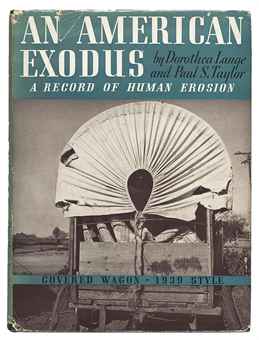
Dorothea Lange and Paul Schuster Taylor, “An American Exodus: A Record of Human Erosion” (1939), cover.
If I were Robert Frank today imagining The Americans ― or Larry Clark working on Tulsa, or W. Eugene Smith and Aileen Smith on Minamata, or Dorothea Lange and Paul Schuster Taylor on An American Exodus ― I’d do them as ebooks. Indeed, several of them, specifically Minamata and An American Exodus, strike me as prophecies of the ebook, prototype hypertexts straining at the confines of the printed, bound book.
You may infer from this that I’ve started to move toward POD and ebook formats myself. Correct. This summer I started working on no less than three series of books of my own work: new editions of some of the out-of-print titles, new compilations (my complete columns for the New York Times, for starters), and subject-specific coursepacks. I plan to offer the coursepacks as ebooks only, the other two series as both ebooks and in POD hard copies. I expect to publish the first set of titles in January 2014.
More on this subject as those projects evolve, and my hands-on involvement with the process enables me to speak from experience. Meanwhile, for a thoughtful weighing of the future of this form, check out “Here Comes the Digital Photobook!” by bookseller, publisher, and curator Markus Schaden in the current issue of European Photography (no. 93, Spring/Summer 2013). And, if you have an iPad (I don’t), download Ken Schles: Invisible City, a digital resource, “a free crowd-sourced eBook study by the Photo Book Club (UK). Includes interviews and other background material.”
•
This post supported in part by a donation from George Malave.


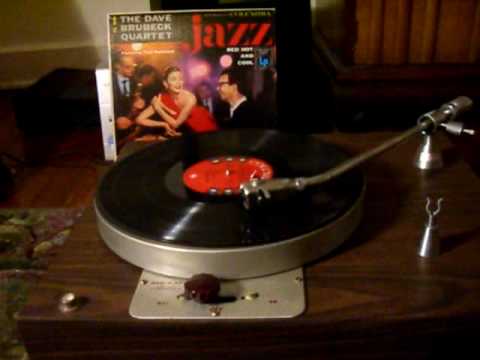
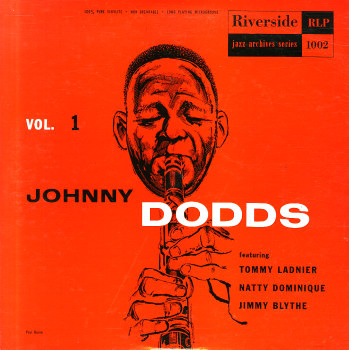
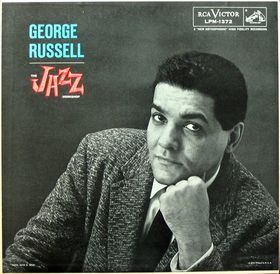




Dear Mr A. D. Coleman,
I wanted to write to say how much I enjoyed the ‘Ink’ series recently which raised questions I think we should all be asking in this difficult yet exciting time for publishing. I was really chuffed to find a link to the Ken Schles iBook at the end of the piece and wanted to let you know that as well as the iBook there is a PDF version which you can find here.
I would love to be able to say that platform is not important as a publisher of digital resources but unfortunately this transitional phase we find ourselves in does mean that while content is still king, the platform battle is a necessary fight in order to progress away from the printed page. And so while the PDF may not have the same experience as the iBook, I hope you find it engaging nonetheless.
Thanks for your time and words,
Best,
Matt Johnston
Founder and Editor
The PhotoBook Club